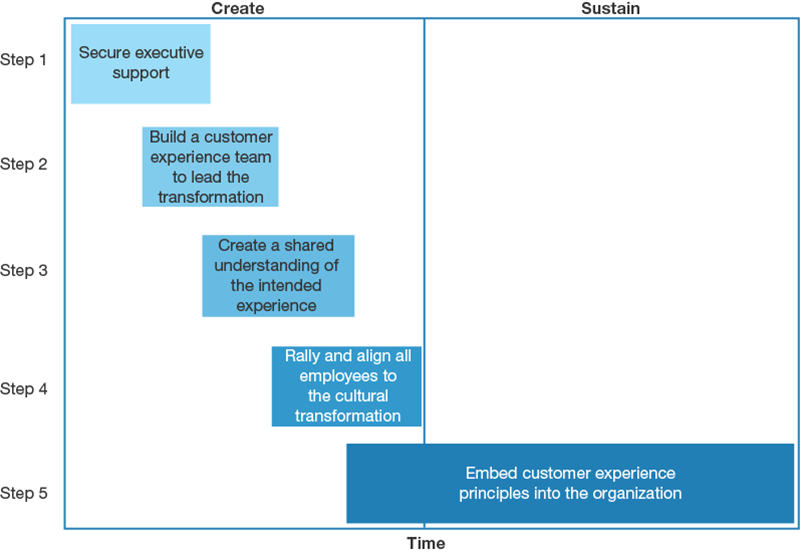5 Steps To Create And Sustain Customer-Centric Culture
My latest report, 5 Steps To Create And Sustain Customer-Centric Culture, is now live on Forrester.com. The report answers the question I hear most often from clients: What are the steps in the process to actually transform organizational culture to be customer-centric? We interviewed companies that have successfully completed this transformation, and companies that are in the midst of that process right now. We learned that there are five steps companies must take to create and sustain customer-centric culture:

Step 1: Secure Executive Support (No, Really). We do not want to sugarcoat this step. Customer experience professionals who don't already have commitment from their executives need to either get it or give up their hopes of transforming their organization's culture. Every successful transformation we studied began with a customer experience epiphany by a CEO or COO. If that realization hasn’t happened yet, CX pros can help create the spark of inspiration with executives. For example, Brad Smith, the Chief Customer Officer at Sage North America, established a program where executives sign up to spend time in the call center or join sales teams on customer visits. And he created a new leadership routine of bringing customer stories to their monthly meetings. His goal was to get senior leaders to see the importance of customer focus.
Step 2: Build A Customer Experience Team To Lead The Transformation. Once executives believe in the idea of cultural transformation, the first thing they do is assemble a team to lead the effort. Art Antin, the founder and COO at VCA Animal Hospitals created the client experience team to drive VCA’s transformation. CX teams must collaborate with key colleagues from across the organization and ensure that the entire organization takes ownership for the transformation.
Step 3: Create A Shared Understanding Of The Intended Experience. Companies must ensure that all employees understand the experience they’re supposed to deliver. That means sharing the vision for the intended experience with them. Cleveland Clinic went so far as to train all 42,000 employees in its patient experience principles. Other companies have created and shared a customer experience charter or vision statement that describes the key attributes of their intended experience. Companies should also collect and share customer success stories as a way of providing tangible examples to employees of expected behaviors.
Step 4: Rally And Align All Employees To The Cultural Transformation. Once employees know what they need to do, CX pros need to motivate them to do it. At this step, reinforcement is critical. Companies must feature their CX principles consistently in corporate communications, and remind employees of their contributions to the overall experience. Safelite AutoGlass went even further. It created a People Powered pledge, detailing its commitment to providing employees with a great work environment that would make it easier for them to deliver great customer experiences.
Step 5: Embed Customer Experience Principles Into The Organization. The final step in creating customer-centric culture is also where companies should start to consider how they’ll sustain customer-centricity over time. This means providing training, and ongoing guidance and coaching. Companies should also update employee competency models to include CX principles. For example, Saskatchewan Government Insurance (SGI) defined six levels of escalating proficiency for customer-driven focus. Each level includes detailed descriptions of the desired behaviors and examples how they should sound. For example, new employees should “provide consistent customer experiences” and must “take personal responsibility” to get promoted. To be eligible for the assistant vice president (AVP) and VP levels, employees must “create customer strategies and inspired others to be customer focused.”
For more details about how companies can transform their cultures to be customer-centric, read the full report. And please share your comments and questions below.